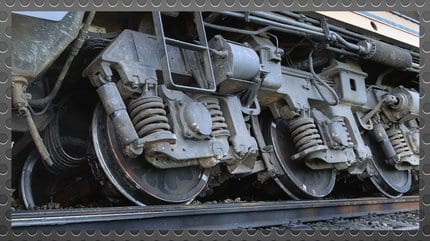- About Us
- Our Services
- Training Expertise
- Crisis Management for Business & Industry
- DOT PHMSA ALERT Rail Car Training
- Emergency Management
- Environmental & HAZMAT
- First Response & HAZWOPER
- Maritime Security
- OSHA Training/Confined Space
- RDPC
- Safer News Gathering
- Safer Ohio Schools Using Threat Assessment Management
- School Safety & Security
- Workplace Violence Prevention
- Courses
- Our Clients
- Media
A Railcar Safety Primer: Part One

While Findlay is now teaching derailment response, common rail safety is always a good subject for refresher training.
Railcar safety training has been a more frequent assignment at Findlay All Hazards in the last year, as we continue our series of grant-funded Rail-Car Incident Response workshops. Spending time with those with EHS responsibilities related to rail traffic has reminded us of the importance of many everyday safety steps. Sometimes, common sense and situational awareness get forgotten in the midst of a response to a railcar incident (or even in the rush to load or empty a rail car). We thought this Tuesday would be a good time to offer a primer for working around rail lines and railcars.
Many of these points are found in a very good railcar safety awareness article written by Kevin Danner of Iowa’s West Central Cooperative and published at grainnet.com. Danner’s piece, which has made a good reference for many years now, nicely summarizes most of the same reminders that Findlay All Hazards trainers present in training sessions.
Danner emphasizes, and we strongly concur, that “the best safety lesson is to be aware and to use common sense at all times and to observe… universal precautions.”
Some of those precautions include:
• Avoid standing, sitting or walking on rails or in between them
• Keep an arm’s length between yourself and any track
• When crossing the tracks, look in both directions to be sure you are not crossing in front of moving equipment
• Step across the tracks in a straight line… Don’t step on a track as you cross it
• Place your feet on only the ground, never on couplers, levers, or drawbars
A remarkable number of injuries are the result of personnel using railcars as transportation. No one should ride railcars unless absolutely needed, and OSHA says that only people with specific duties that require riding moving equipment may do so.
The Danner article reminds us that if we must ride a moving car, always do so “from the side of the lead car, toward the front, and face the direction of travel.” Two miles per hour is the speed limit for stepping on or off a rail car. Any faster, and the vehicle is moving too fast for you to board or exit.
It isn’t just the motion of the vehicle that can cause injury. Simply mounting railcars can be dangerous. Always maintain three points of contact between your body and the railcar on ladders and foot rails.
Danger on-board is usually joined by danger around. There are any number of hazards near railcars and lines, including:
- Power lines
- Ice, snow, slick spots, or asphalt cracked from wear and heat
- Low clearance areas
Of course, it’s a good idea to develop the kind of safety mindset that keeps everyone on their toes in railcar zones, but EHS managers can help people work safer in these areas by assessing this part of your workplace and posting reminders and warnings in adjacent places. Making a verbal comment at safety meetings regarding expected inclement weather is wise.
Next Tuesday, we’ll look at other safety concerns specific to railcar use and rail traffic. Meanwhile, take a look at Findlay’s Rail-Car Incident Response page. This is a free workshop for first responders, especially those in remote areas, funded by the Department of Transportation. Training events take place at your location, but the remaining number of presentations allowed by the DOT allocation is limited. Contact Findlay today about scheduling and availability.
